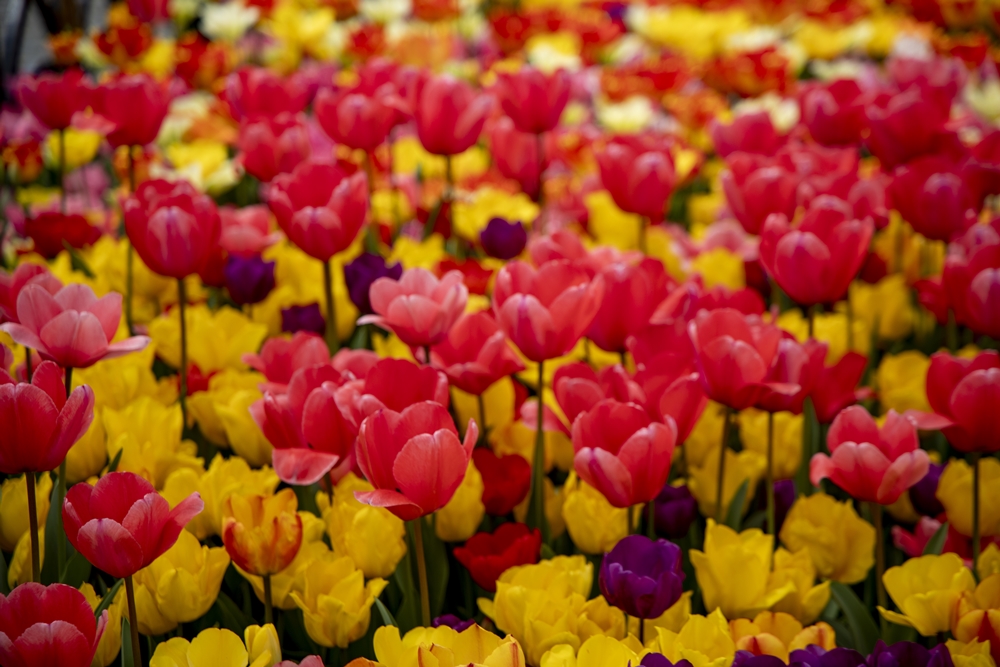The tulip season heralds the arrival of spring in Istanbul. Every year in April, some of Istanbul’s most popular spots are decorated with colourful spring tulips, transforming the city into a massive and delightful visual feast of bright beauty. For example, an expansive carpet of tulips is woven into Sultanahmet Square using the aquaculture method of tulip cultivation. This breathtaking sight captivates both locals and foreign visitors. Similar views can be found in Emirgan Grove, Gülhane Park, Yıldız Grove, Soğanlı Botanic Park, Beykoz Grove, Büyük Çamlıca Grove, Küçük Çamlıca Grove, Fethipaşa Grove and the Hidiv Pavillon Grove in İstanbul.
The tulip symbol is prominent in Turkish art and culture
Tulips were brought to Anatolia by the Turks of Central Asia’s Pamir Mountains, the tulip’s original homeland and are among the most important symbols of Turkish culture. The tulip, a bulbous and herbaceous plant, has been deployed as an ornamental motif in handicrafts since the 12th century. This beautiful, colourful flower was trendy in the Ottoman period as a subject of poems, edicts, stories and miniature paintings. Tulip motifs were utilised in mosques, tombstones and palace decorations, as well as in carpet and rug patterns, on caftans and dowry chests, and even on coins, battle helmets and cannon castings.
Tulips, essentially wildflowers, were cultivated during the 16th century in İstanbul, the capital of the Ottoman Empire and were planted throughout the city as garden flowers. This passion for tulips rose and expanded throughout the reign of Suleiman the Magnificent, leading to the development of different varieties and cultivars of the plant. Especially the İstanbul tulip, identified with and a symbol of the city, emerged in this period. During the reign of Sultan Ahmet III, the tulip reached such prominence, with almost two thousand varieties, that it gave its name to an era – the Tulip Era (Lale Devri) at the beginning of the 18th century.
Each colour has a different meaning
As more tulip varieties were cultivated, tulips and their colours accorded various meanings. Red tulips symbolised love, while white tulips represented purity and innocence. Purple blooms denoted ‘nobility and romance’, and yellow pointed to ‘joy’ and ‘hopeless love.’ The rare black tulip signified ‘unattainability and rarity’, while the striped tulip meant ‘you have beautiful eyes’.
This gorgeous flower, featuring such an important place in Turkish culture, was first brought to Vienna, Austria, and then to the Netherlands in the second half of the 15th century and thus introduced to Europe. Quickly attaining great popularity in the Netherlands, tulips were brought to Ottawa, the capital of Canada, becoming world-renowned.
There are numerous tulip varieties still grown in Anatolia today. Among the most striking is the “inverted tulip”, also known as the “weeping bride”. There are 167 species of inverted tulips worldwide; of these, 43 species, 20 of which are endemic, can be seen in Türkiye. ///nCa, 20 March 2023 (in cooperation with Embassy of Turkiye in Turkmenistan)
